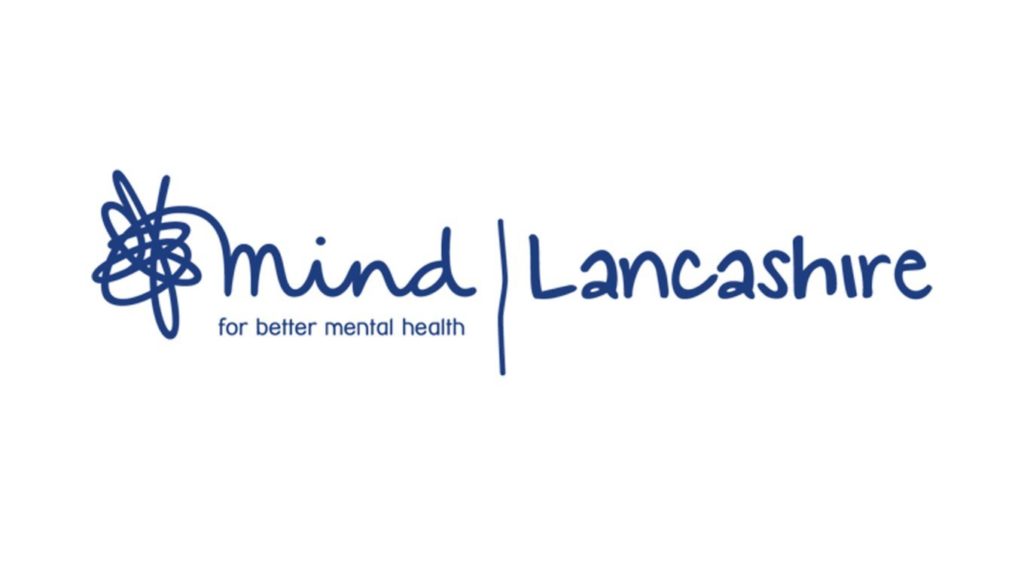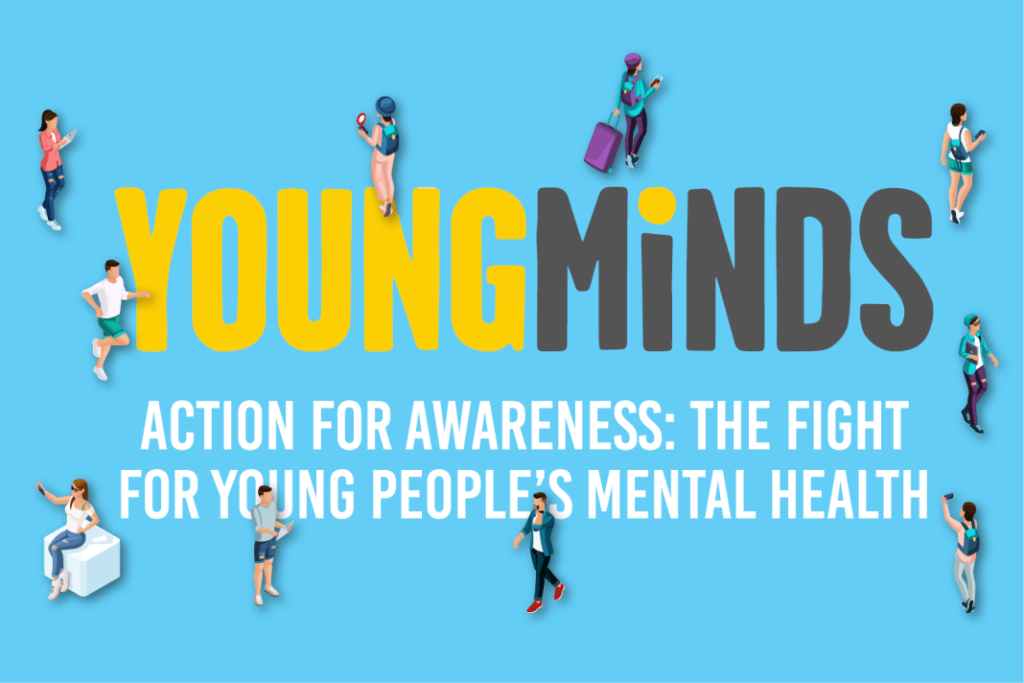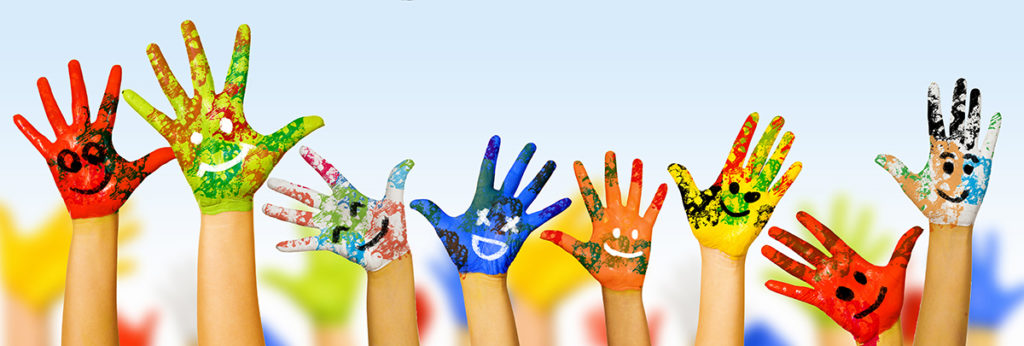Illness and Minor Injury
Burns and Scalds
Immediately place the area under cold running water to take the heat out of the skin. Don’t do this for longer than 10 minutes, as babies and toddlers can get too cold. If there’s no running water, immerse the burn or scald in cold water or any other cool fluid, such as milk or a cold drink.
Use something clean and non-fluffy, like a cotton pillowcase or clingfilm, to cover the burn or scald and reduce the danger of infection.
If your child’s clothes are stuck to the skin, don’t try to take them off. If the burn is not calmed by the above actions, don’t put any ointments or creams on, as it will have to be cleaned off before the area can be treated. Depending on how severe it is, see your GP or go to a minor injuries unit or accident and emergency department.
Blisters will burst naturally. The raw area underneath needs a protective dressing. Ask your pharmacist or practice nurse for advice.
Constipation
What is normal?
We are all different, having a poo; anything from 3 times a day to 3 times a week is ‘normal’.
It can be difficult or embarrassing for many children (and adults) to talk about going to the toilet, this chart is often used to help understand what the normal poo looks like! Types 3 and 4 are considered the ‘normal’; types 1 and 2 are typically associated with constipation and types 5 to 7 with diarrhoea.
You may find it useful to use this chart when you talk to your child about going to the toilet, as they may be able to point out what it looks like now, and over a period of time, see how it improves.
Fibre & Fluid
– 6-8 glasses of water every day
– Regular meals
– You could gradually include more fibre at each meal and snack, for example:
– Fruit and vegetables – try to have a variety and aim to eat 5 “me sized” servings every day
– High fibre breakfast cereals – at breakfast time or as a snack e.g. porridge, high fibre cereals
– Wholemeal, granary or high fibre white bread
– Don’t forget the old favourite baked beans
– For further ideas and further information visit www.nhs.uk and search “5 a day” and “change 4 life”.
Lifestyle & Routine
Don’t be afraid to talk to your child about going to the toilet – after all we all do it!
Routine – Make time for a toilet routine, the urge to poo occurs naturally after eating – get into the habit of going to the toilet 20-30 minutes after meals, exercise regular.
Don’t rush children who need to sit for a little longer.
Position – Be comfortable and relaxed – use a child seat if necessary. Feet on floor, stool or a step and hands free. If your child needs some encouragement use a windmill or bubbles and keep these just for the toilet – they occupy the hands, act as a distraction and relax the muscles.
Exercise – Children should aim for a minimum of 60 active minutes every day, for ideas see www.nhs.uk/change4life
Is my child constipated?
It can be difficult for children of any age to tell someone they are constipated. The signs to look for are:
– Less than 3 poos a week
– Tummy ache/cramps
– Pain or straining when passing poo
– Passing dry hard poo
– Avoiding the toilet
– Not feeling the need to poo
– Feeling that the poo is not finished
– Sore bottom
– Unpleasant smelling wind
– Soiling or watery poo
People I can turn to for help
Friends and Family may be able to give advice.
The key professionals trained to help children with constipation are health visitors, school nurses and GP.
They all work together as the core team to look after children with constipation and are experts at helping families.
If a child is seen by an out of hours doctor, a hospital consultant or by the Accident and Emergency department they will always link you and your child back into the core team.
What the team will do
With you they will reach a clear understanding of your child’s needs by:
– Listening to your concerns
– Taking a history
– Carrying out a physical examination
Following this they will agree a plan with you based on National Guidance (NICE)†
The plan will depend on:
– If there are any underlying medical conditions*
– If the poo is impacted (large, dry, hard poo which is stuck)
– Other related issues
† NICE – National Institute of health and Clinical Excellence www.nice.org.uk
* The most common type of constipation is called idiopathic which means it has no underlying cause.
The Plan
For constipation – Life style advice and medication such as lactulose/senna is available from your pharmacy.
Some children may require treatment for impaction*.
The plan must include:
– Medicines.
– Diet, drink, and exercise.
– Toilet routine and behaviour
In cases where impaction is diagnosed paediatric macrogol** will be used but you may also be given other medication such as lactulose/senna.
You will always receive:
– A copy of the Health Builders Advice leaflet incorporating your child’s plan; and
– A copy of this constipation pathway
* Impaction is a large, dry, hard poo which is stuck
**Only available on prescription
Support
A member of the core team will be in regular contact. Contact will initially be every 2-3 weeks.
If your child is impacted a member of the team will see them within a week of treatment starting.
After 8 weeks if no progress has been made, advice may be sought from a clinician.
The clinician will provide advice through the core team. Typically a child only needs to see a specialist once.
The core team will keep you up to date and regularly review progress with you.
How will I know my child is better?
They will have a soft comfortable poo
They will be less likely to become constipated again
Remember if your child becomes constipated then do not hesitate to contact your core team
Coughs, colds and breathing difficulties
What should I do if my child has a high temperature?
A normal temperature is less than 37.5 C
Babies:
0-3 months: Temperature above 38⁰C – seek help
3-6 months: Temperature above 39⁰C – seek help
Babies and children 6 months and older
A high temperature alone is not a good guide to working out how ill your baby or child is.
For further information see the High Temperature pathway
My baby has a cold and is not feeding well
– Offer smaller and more frequent feeds
– If your baby is taking less than half their usual feed (over a 12 hour period) seek help
– Repeated dry or damp nappies, dry lips or mouth, sunken eyes or fontanelle (soft spot on top of babies head) are signs of dehydration: seek urgent help
– Saline nose drops before feeds may help clear the mucous in the nose these can be purchased from a pharmacy
Preventing respiratory illness
Children who live in a smoky atmosphere are more likely to suffer from illness such as coughs, colds and asthma.
Protect you and your family by avoiding smoking and smoky areas.
Contact your local NHS stop smoking service or your GP surgery/pharmacy for help to quit smoking.
Cough medicines are NOT recommended for children under the age of 6 years.
Breastfeeding can help prevent respiratory illness, so try to continue.
Encourage the whole family to eat a healthy balanced diet.
Encourage the whole family to wash their hands regularly to prevent colds spreading.
The majority of children do not require antibiotics.
Catch it – Bin it – Kill it
Emergency
Call 999 if your child show signs of a life threatening illness which may include:
– Your child’s colour becoming extremely pale or blue or both
– Your child becoming unresponsive or you are unable to rouse your child
– Several long pauses in your baby or child’s breathing lasting 10 seconds
– Your child is struggling to speak or drink because of breathing difficulties
It’s common for babies and children to get a lot of coughs and colds
Parents and carers can usually manage babies and children at home with:
– A blocked nose
– Cough
– Sneezing
– Sore throat
– Earache
– Feeding a little less than usual
– Occasional vomit after coughing
– General aches and pains
When should I seek help?
– Coughs lasting more than 3 weeks
– Fast, or short shallow breathing
– Noisy breathing
– Forced or strained breaths
– Chest and neck muscles pulled in with each breath
– Sucking in under the rib cage
– Breathing makes baby’s head bob
– Breathing makes nostrils widen
– Difficulty speaking or drinking
– Vomiting frequently after coughing
– Having less than half of usual feeds
– Pale or mottled skin (blotchiness, with different shades and colours)
– Very restless, or very agitated, or very sleepy
People I can turn to for help
– Friends and Family
– Health Visitors
– GP
– Pharmacists
– Out of Hours doctor
– 111
– NHS Choices Website
– Children’s community nursing team
If your child is seen by a hospital doctor or by the Emergency Department they will inform your GP surgery, health visitor or school nurse.
What the health professional will do
With you they will reach a clear understanding of your child’s needs by:
– Listening to you and your child’s concerns
– Taking the full history including previous episodes or patterns
– Observing and assessing your child
With you they will agree a plan
The plan will depend on:
– If your child is less than 6 months old
– If there are signs of an illness that needs treatment
– The need for further assessment
– If there is a long term condition. e.g. asthma
* The most common outcome for children with coughs, colds and breathing difficulties is to get better at home.
The Plan
The plan will include :
– Where to look after your child – most will stay at home
– Advice on home care – including when to ask for help again
– Expected length of illness and likely outcomes
– If and when a review of your child is necessary
For some the plan will include advice on:
– Further assessment or tests
– A named key contact
– Attending nursery and school
– Long term conditions
– Further helpful information
How will I know my child is better
– Breathing will be back to normal
– Drinking, eating, weeing and sleeping will start to improve
– The cough will start to reduce within 3 weeks
– The temperature will be normal (37.5oC or less) within 5 days
Cuts and Gashes
Children are always playing and exploring, and getting cuts and scrapes. If there’s a lot of bleeding, press firmly on the wound with a clean cloth, such as a tea towel or flannel. If you don’t have one, use your fingers. Press until the bleeding stops – may be 10 minutes or more.
If possible, raise the injured limb to help stop the bleeding (not if you think the limb might be broken, in which case seek medical help). Cover the wound with a clean dressing. If blood soaks through, leave the dressing there and put another over the top.
It’s very unusual for a wound to cause serious blood loss, but if the cut keeps bleeding or there’s a gap between the edges of the wound, take your child to accident and emergency or a minor injury unit. If there is a possibility of a foreign body (e.g. a piece of glass) in the cut, go straight to A&E.
Diarrhoea and Vomiting
Is my child unwell?
When young children suddenly begin to have diarrhoea and vomiting this is usually caused by an infection in the gut. This illness is known as gastroenteritis.
What causes gastroenteritis?
The most common cause of gastroenteritis in children is a virus called the rotavirus. This virus is passed out in the stools (faeces) of someone with the infection. It can be transferred to food, objects and surfaces if the infected person doesn’t wash their hands after going to the toilet.
The infection is usually then passed to someone else when they either eat contaminated food or touch a contaminated object or surface and then touch their mouth.
Young children are particularly vulnerable to this infection because they often forget to wash their hands after going to the toilet or before eating, and they have not yet built up a resistance to the rotavirus.
It’s estimated that almost every child will have at least one rotavirus infection before the age of five and many children will have several episodes a year. Most infections occur among children under four years old.
When should I seek help?
Most children with Gastroenteritis get better without treatment. You will normally be able to look after them at home.
Signs and symptoms to look out for are: *Green *Amber *Red
Green: (Monitor at Home)
– Playing, eating and drinking normally
Amber: (Contact a Health Professional)
– Passing urine less often than usual
– Sunken soft spot (fontanelle) on their head
– Have few or no tears when they cry
– Have fewer wet nappies
– Drowsiness
– Tiredness
– Dark coloured, strong smelling urine.
– Becomes ill after foreign travel
Red: (Urgently Contact GP/A&E)
– Temperature of 38°C (100.4°F) or higher in children younger than three months
– Temperature of 39°C (102.2°F) or higher in children older than three months
– Shortness of breath
– Abnormally rapid breathing
– Stiff neck
– Swelling in the soft part of their head (fontanelle) in babies, 0-18months only
– Blotchy red rash, which, unlike most other rashes, does not
– Fade when you put a glass against it
– Blood or mucus in their stools (faeces)
– Green vomit or vomiting for longer than three days
– Severe pain or swelling of their stomach
– Change in their normal mental state, such as appearing confused
– Diarrhoea that lasts longer than a week
– Symptoms of dehydration that persist or get worse, despite treatment with fluids and oral rehydration solution
– Extreme thirst
– Feeling unusually tired (lethargic) or confused
– Not passing urine for eight hours
– Rapid heartbeat
– Dizziness when you stand up that doesn’t go away after a few seconds
People I can turn to for help?
The information provided in this pathway is for parents or carers of children under 5’s with diarrhoea and vomiting. It gives advice on how to look after your child, the symptoms to look out for and what to do if your child’s symptoms get worse. It is not meant to be a substitute for advice from a doctor or nurse, or CHoC.
The following people can be contacted to get advice and guidance:
– Your Family & Friends
– Community Pharmacist
– Health Visitor
– School Nurse
– GPs
– NHS 111
– Out of Hours (Cumbria Health on Call, CHoC)
Contact with a health professional will not necessarily be face to face. An initial consultation may be given over the phone, following this discussion the health professional may well ask to see your child.
What the health professional will do
With you they will reach a clear understanding of your child’s needs by:
– Listening to you and your child’s concerns
– Making an assessment of your child’s needs either on the phone or face to face
– The plan will depend on:
– The age of your child
– If there are signs of illness that need treatment. Treatment might include:
– Fluids to help re-hydrate your child
– Paracetamol to aid in pain relief
– The need for further assessment
– As most infections are viral it is extremely unlikely that your child will need antibiotics.
The Plan
The plan will include:
– Where to look after your child – most will stay at home
– Advice on home care – including when to ask for help again
– Expected length of illness and likely outcomes
– If and when a review of your child is necessary this may be by your GP or in hospital
For some, the plan will include advice on:
– Further assessment or tests
– Attending nursery or school
– Referral to hospital may be for assessment in the first place, but may lead to admission
You will always receive:
– A copy of this Health Builders Diarrhoea & Vomiting pathway
How will I know my child is better?
Diarrhoea often lasts for 5-7 days and in most children it will stop within 2 weeks.
Vomiting often lasts 1-2 days and in most children it will stop within 3 days.
When your child is feeling better and is starting to eat and drink more normally and is managing to keep fluids down and not have to go to the toilet, this is a good indication that the episode of Diarrhoea & Vomiting has finished.
Be aware that your child may still be infectious, even after they are feeling better.
About hydration
Severe diarrhoea and vomiting can lead to dehydration, which is when the body doesn’t have enough water or the right balance of salts to carry out its normal functions. If the dehydration becomes severe it can be dangerous.
Children at risk of dehydration include; young babies, children who haven’t been able to drink enough during their illness and children whose diarrhoea and vomiting has been severe.
Contact your healthcare professional, for instance your doctor, if your child develops any of the symptoms of dehydration listed below. Some of the symptoms of dehydration are:
– Seeming unwell
– Unusually irritable/lethargic
– Passing less urine than normal
– Pale or mottled skin
– Cold hands and feet
– Dry mouth
– Lack of tears
How to prevent dehydration
If your child has gastroenteritis but is not dehydrated:
– Keep feeding them as normal (for example, breast milk) and offer plenty of drinks
– Your healthcare professional, for instance your doctor, may recommend that you give your child a special fluid known as ORS (Oral Rehydration Salt Solution). ORS (e.g. Dioralyte / Electrolade) can help prevent dehydration from occurring. It is also used to treat children who have become dehydrated (see page C)
– If you do not have any ORS, you can use sugary cordial or iced lollies to aid in rehydration
– Fresh fruit juice and fizzy drinks should be discouraged, because these can make diarrhoea worse
Treating dehydration
How to treat dehydration at home
– Most children who are dehydrated can be rehydrated by giving them ORS to drink.
– Make up the ORS according to the instructions on the packet. Your healthcare professional can tell you how much your child should drink.
– Give your child frequent, small drinks of ORS.
– Your child may vomit a little when they start to drink the ORS.
– Contact a healthcare professional if your child keeps vomiting or will not drink the solution.
– If you are breastfeeding your child, continue to breastfeed in addition to giving the ORS.
– If you do not have any ORS available or your child will not drink ORS you can use sugary cordial or iced lollies to aid in rehydration.
– Fluids should be given ‘little and often’.
– Your child should not eat solid food until they are rehydrated.
– It usually takes about four hours to complete rehydration.
Going to hospital
Your child may need to go to hospital if they won’t drink the ORS, or keep being sick, or if the dehydration is severe, or if the healthcare professional is concerned.
Treatment in hospital will include:
– Assessment
– Possible treatment with ORS
– Observation for a period of time
– A small number of children may need blood tests or other interventions
Caring for your child after rehydration
– It’s important your child eats well after they are rehydrated, to help with recovery.
– Your child can start to eat solid food straight away.
– Your child should drink plenty of their usual fluids. This should include breast or other milk feeds (full fat).
– You should avoid giving your child fresh fruit juice or fizzy drinks until the diarrhoea has stopped.
– Your healthcare professional, for instance your doctor, may also recommend that your child drinks rehydration solution after each bout of diarrhoea.
– Simple foods should be given to your child after they have been rehydrated e.g. a plain biscuit or dry toast.
Preventing the spread of gastroenteritis
Everyone in your household should wash their hands regularly; this is the best way to help stop other people getting gastroenteritis.
You and/or your child should wash your hands with soap (liquid if possible) in warm running water and then dry them carefully:
– After going to the toilet
– After changing nappies
– Before touching food.
Your child should not:
– Share his or her towels with anyone
– Go to school or any other childcare facility until 48 hours after the last episode of diarrhoea or vomiting
– Swim in swimming pools until 2 weeks after the diarrhoea has stopped
If your child is at nursery/school please inform them that your child has had diarrhoea & vomiting
High temperature
Is my child with a high temperature unwell?
A normal temperature is less than 37.5 C
The use of a digital thermometer gives the most accurate reading.
A high temperature alone in a child over 6 months is not a good guide to how ill the child is.
A high temperature in children and babies over 6 months is common and is usually due to a virus. This usually gets better by itself within a few days.
How to take a temperature
What to use:
Digital thermometers are recommended
Ear thermometer (not for babies)
Forehead strips may be used by families, but not by health professionals
It is not always possible to find a cause for high temperature. This is common.
When should I seek help?
Baby under 3 months with a temperature above 38 C
Baby 3-6 months with a temperature above 39 C
For a baby or child over 6 months:
If your child has any of the following seek immediate help:
– Unusually sleepy or hard to wake up
– Pale or mottled skin (blotchiness, with different shades and colours)
– Unusual breathing or, an unusual cry
– A rash that doesn’t disappear with the tumbler test
– Fits (convulsion)
– No wee or no wet nappy all day
– Headache
– Stiff neck
– Discomfort with bright lights
Call 999 immediately if your child shows signs of a life threatening illness which may include:
– Your child’s colour becoming extremely pale or blue or both
– Your child becoming unresponsive or you are unable to rouse them
– Your child has a rash which you can see through a glass in the Tumbler Test
The Tumbler Test
If a rash appears, press a glass firmly against the skin. If you can still see the rash through the glass call 999 immediately.
What can I do practically at home?
– Offer small amounts of drinks (water/juice) often, or – aim for wee to be pale yellow
– If your child is breastfeeding continue as normal
– Keep the room cool (approximately 18-20 C)
– Check your child regularly(including 2-3 times during the night)
– Do the Tumbler Test if your child has a rash
– Keep your child away from school or nursery while they have a raised temperature
What medications?
It is not necessary to use medicines to treat your child’s temperature. If your child has a fever and is distressed you can help to make them feel more comfortable by giving them either paracetamol or ibuprofen. Always follow the instructions on the bottle or packet or check with a health professional.
Paracetamol:
Do not give to babies under 2 months of age, unless advised by a health professional
Ibuprofen:
Do not give to babies under 3 months unless advised by a health professional
Aspirin:
Do not give to children & young people under 16 years old
Antibiotics:
Do not give unless a bacterial infection is identified, the majority of children do not require antibiotics
People I can turn to for help
The key health professionals trained to help children with high temperature are; health visitors, school nurses, family doctors (GPs), out of hours doctors (CHoC), pharmacists, 111 and NHS Choices.
Friends and Family may be able to give advice.
What the health professional will do?
With you they will reach a clear understanding of your child’s needs by:
– Listening to you and your child’s concerns
– Taking a full history
– Usually carrying out a physical examination (including breathing rate and pattern, heart rate, activity and hydration) and they may arrange to test a sample of wee
With you they will agree a plan based on national guidance (NICE)*
The plan will depend on:
– If the child is less than 6 months old
– If there are signs of illness that need treatment
-The need for further assessment
*NICE – National Institute for Health and Clinical Excellence (www.nice.org.uk)
The Plan
The plan will include:
– Where to look after your child – most will stay at home
– Advice on home care – including when to ask for help again
– Expected length of illness and likely outcomes
– If and when a review of your child is necessary this may be by your GP or in hospital
For some, the plan will include advice on:
– Further assessment or tests
– Attending nursery or school
– Referral to hospital may be for assessment in the first place, but may lead to admission
You will always receive:
– A copy of this Health Builders High Temperature pathway
How will I know my child is better?
– The most common outcome for children with high fever is to return to normal without treatment
– The temperature will be normal (37.5 C or less) within 5 days
– Drinking, eating, weeing and sleeping will be back to normal
Insect bites and stings
Bites and stings are normally harmless and usually only cause minor irritation by becoming red, swollen and itchy for a few days.
You can easily treat them by washing the area with soap and water and placing a cold compress (a flannel or cloth soaked in cold water) over to reduce swelling.
Tell your child to avoid scratching to reduce the chance of infection. If they are in pain, or the area is swollen, use paracetamol or ibuprofen.
See a GP if there’s a lot of swelling and blistering of the area or if there’s pus, which indicates an infection.
In rare cases, some people can have a serious allergic reaction (anaphylaxis) to a bite or sting. Dial 999 for an ambulance if your child experiences:
- difficulty breathing or swallowing
- nausea, vomiting or diarrhoea
- dizziness or feeling faint
- confusion, anxiety or agitation
Reflux
What is reflux?
Reflux is an extremely common condition affecting babies, it will probably affect 40% of babies under the age of 6 months. It is due to the muscles at the bottom of the oesophagus (gullet) being too relaxed and allowing passage of the stomach contents into the mouth and being sometimes vomited or posseted. This regurgitation is usually effortless, and harmless in the majority of babies. However, if it is associated with other symptoms such as pain, difficulty in putting on weight or distressed behaviour then it is termed gastro-oesophageal reflux disease (GORD) and may need treatment.
Who gets GORD?
Any baby can get GORD but it is more common in certain groups of children:
– Premature babies
– Babies with a neurological disability (such as cerebral palsy)
– Babies with low birth weight
– Babies with cow’s milk protein allergy
Both bottle and breast fed babies can get GORD.
Where should I seek help?
Effortless regurgitation is usually harmless and doesn’t need any treatment.
Gastro-oesophageal reflux is suspected when there is a history of regurgitation with any of the following symptoms:
– Distressed behaviour
– Hoarseness or chronic cough
– Unexplained feeding difficulties
– Issues with growth
– Pneumonia
You should speak to your GP or health visitor if you are concerned with your child and they have these symptoms.
Sometimes reflux/posseting may represent a more serious disease. This is rare but if your child has symptoms of reflux but also any of the following we advised you to seek immediate help from your GP, A+E or 111:
– Frequent forceful vomiting
– Bile stained vomit
– Vomiting blood
– Blood in stool
– Abdominal Distention
– Fever/ill child
– Reduced conscious level
– Lethargy/irritability
Who can I get help from?
The key health professionals trained to help children GORD are:
– Health visitors
– Family doctors (GPs)
– Paediatricians
How is GORD diagnosed?
Usually this is done based on the history and examination of your baby. It is rare any further tests are needed.
However if the symptoms are severe and not responding to normal treatment then your baby may have further tests including measuring of the acid in their stomach (pH monitoring), endoscopy (a camera test) or a barium swallow (x-ray). These would be organised after seeing a paediatrician.
How is GORD treated?
Regurgitation of small amount of feeds without distress (posseting) is harmless and does not need treatment. Some children with mild symptoms of GORD who are growing normally may not need any treatment, just closer monitoring of their weight and symptoms by their GP or health visitor.
Sometimes raising the end of the bed at home can help symptoms, but your baby must be left on their back to sleep.
In breast fed babies, seeking advice from your health visitor or breastfeeding practitioner on breastfeeding and positioning can be helpful.
In bottle fed babies, it can be helpful to review the amount of milk that is being taken. It could be that your baby is having too much milk for their weight and age (overfeeding). Sometimes having more frequent but smaller feeds can help with symptoms of GORD. We suggest you do this with the help of your health visitor or GP.
If these simple steps don’t help then we suggest talking to your GP who may suggest other treatments.
– Thickening feeds. This can be done by either buying pre-thickened feed such as SMA Staydown® or Enfamil AR®, or using thickening agents such as Carobel®. We usually advise to try this for 3 weeks to see if it has any benefit.
– If this doesn’t help your doctor may then prescribe Gaviscon® (alginate). This works by lining the stomach as well as thickening the feed, and shouldn’t be used with other thickening agents.
– Both Gaviscon® and thickeners can cause constipation as a side effect and if this occurs whilst your child is on these medications, you would need to discuss it with your health visitor or GP.
– If Gaviscon® doesn’t help, then there are medications that can be prescribed to help reduce the amount of acid that is being produced by the stomach. Usually ranitidine (H2 antagonist) or omeprazole (proton pump inhibitor) will be prescribed to help your child’s symptoms.
If despite these medications your child is still having significant symptoms then your GP will refer you on to see the paediatrician for further treatment.
How will I know when my child is better?
The treatment above should reduce the symptoms of GORD that your child gets. They will be monitored by the GP, health visitor or paediatrician on a regular basis to review their symptoms and growth.
Most babies will grow out of GORD by the age of 6-12 months, usually when they start sitting upright.
Once a treatment is found that helps your child’s symptoms it is advised to review treatment every few months to consider a trial to stop the medication to see if the symptoms have subsided.
Sprains and Strains
These are very common injuries, especially during physical games and sports.
A sprain is when ligaments have been stretched, twisted or torn and often happens in the knees, ankles, wrists and thumbs. Symptoms can include tenderness/pain, being unable to use the joint normally or put weight on it, swelling and bruising.
Strains are when muscles stretch or tear and are common in the legs and back. Symptoms can include pain, swelling, bruising, spasms and temporary loss of function in the affected muscle.
Generally, a sprained joint should be moved as soon as it is not too painful, whereas a strained muscle should ideally be kept still for a few days.
Most sprains and strains can be cared for at home using PRICE therapy (protection, rest, ice, compression and elevation). Painkillers, such as paracetamol, can help and the affected body part will usually be back to normal within a few weeks.
You should take your child for medical advice if the pain is very severe, they cannot put any weight on the injured area, it gives way when they try to use it, the injury looks crooked/has unusual lumps or bumps (other than swelling) or there is numbness or coldness in any part of the area.
Mental Health Services
There are a range of local and national services for young people who are struggling with their mental health:

Phonelines:
Childline: 24/7 phone service for under 19s. Tel: 0800 1111
Samaritans: 24/7 phone service for all ages. Tel: 116 123

Lancashire Mind – for resources and coaching sessions for young people

A-C-E – support for those aged 11 – 25

Prop-Up Project – group for teenagers & young adults who find socialising with others their age hard & would like to improve their mental health.

Young Minds – provide young people with tools and resources to look after their mental health

Kooth – online mental wellbeing community for young people

Healthy Young Minds LSC – information and support for children and young people

LSCFT Child and Adolescent Mental Health Services – help for children, young people and their families when they are feeling sad, worried or troubled.
A.C.C.E.S.S. – Lancaster based charity providing low cost family/individual counselling from age 6 up.
Telephone: 01524 39138
Young Addaction – Drug and Alcohol Services for under 25s
Telephone: 0808 164 0074
Autism Support for Families
The Lancashire and Cumbria autism support hub – Free advice, support and guidance on autism.
Join the conversation for free support on a range of issues affecting autistic children, adolescents and adults.
- Autistic people sharing real experiences of everyday challenges
- Free clinical advice from experienced clinicians
- Monthly email updates with advice and information
- Tips to help you manage everyday challenges
- Live online discussions and Q&A sessions
Page last reviewed: November 7th, 2023
Next review due: February 19th, 2022
